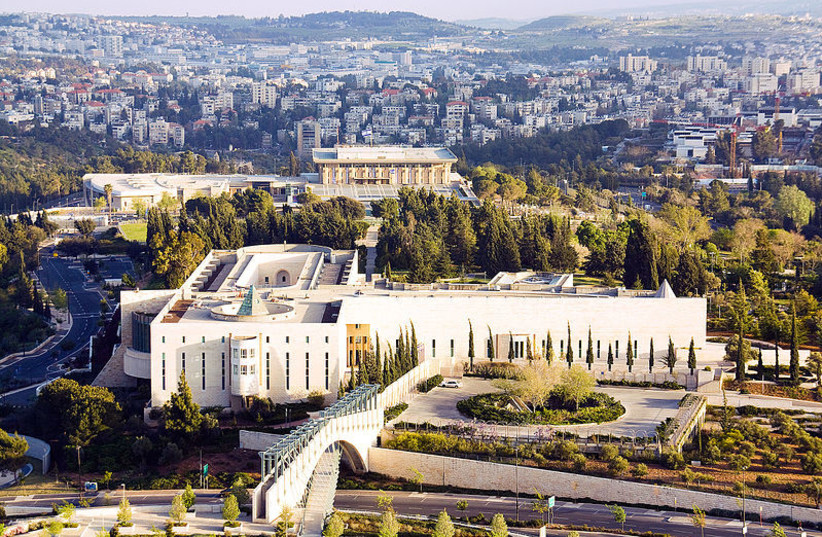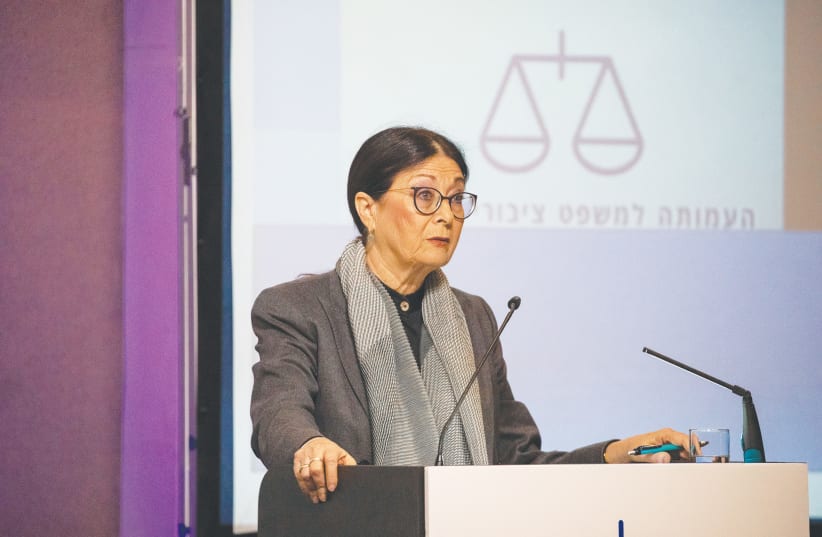Few doubt that the massive demonstrations against the judicial revolution are about much more than proposed legislation to limit Court dominance. Haredi preeminence, religious coercion, preservation of the IDF as an army of the people, political arrogance, unworthy ministers, weariness of Prime Minister Benjamin Netanyahu and/or his hyperactive family and other push-button issues have all contributed to mobilizing the opposition and even outrage of a sizable public.
Few doubt that this widespread, public arousal will have broad consequences and deep ramifications yet to be seen. “Things will not go back to what they used to be,” as more than one sage (viz., taxi cab driver) ominously pronounced.
But one thing that we can predict will definitely change is the decisions of our judges: Like it or not, we will have judicial reform.
Judicial reform is already here
Whether or not we also get a judicial revolution depends on the current talks, future talks, demonstrations, counter-demonstrations and legislation. But the judges we already have are human beings. And their attitudes, predilections, concerns and decisions are affected by experience, perception and milieu.
Former Supreme Court president Aharon Barak would have done things very differently had he understood the societal convulsions ultimately caused by his judicial revolution of the 80s and his self-declared constitutional revolution of the 90s. And Supreme Court President Esther Hayut would have thought more carefully and more modestly before rushing to rule that the Supreme Court has the God-like authority to decide on the constitutionality of constitutional amendments.


Would the Supreme Court nullify Knesset legislation as readily today as it did six months ago? It should be clear to all that it will not.
That judicial reform is already here is supported by history, as well as by a basic understanding of human nature.
In February 1937, United States president Franklin D. Roosevelt (FDR), reelected the previous November by a massive majority, sought to pack the Supreme Court and the entire federal judiciary by passing reform legislation. In the US, judges serve for life. FDR proposed a law whereby a new federal judge would be appointed to any court where a sitting judge reached the age of 70 and chose not to retire.
Surprisingly, the number of US Supreme Court judges is not fixed by the Constitution and had previously been changed a number of times. The new legislation would effectively have increased the US Supreme Court from nine Justices to as many as 15.
FDR’S REFORM was motivated by the fact that in his first term, the Supreme Court had struck down one radical law after another as unconstitutional. The US, as opposed to Israel, has a written constitution ratified by large majorities in special, popularly elected institutions, rather than one, pronounced on high from thin air by appointed judges.
As one who studied and litigated US constitutional law, the decisions holding the FDR laws unconstitutional seem to me sound judicial application of precedent. But the majority of the Supreme judges had been appointed by previous conservative presidents and ratified by previous conservative Senates and the anti-New Deal majority was correctly viewed as conservative; while the reforms they nullified were liberal (actually, quite radical).
FDR’s court-packing scheme ultimately failed passage due to a confluence of reasons, including Congressional delay and the untimely death of its leading advocate. So there was no court-packing judicial revolution. But there was judicial reform.
One of the same conservative judges who had nullified the FDR laws before, now started approving them. Reading the old decisions in juxtaposition to the new ones is more a lesson on human nature than on jurisprudence. Judges are human beings living in the same society as the rest of us. Justice Owen Roberts, the redeemed conservative, apparently understood that the Court’s decisions had been widely unpopular and while one cannot know for sure if his new approach was deliberate or subconscious, the change was widely called, “the change in time which saved the nine.”
While today it is the people most widely demonstrating who feel they are losing power, no one can doubt that judicial reform – and there are many proposals yet to come – is supported by at least half of the voting public. These people also sense a feeling of powerlessness because the government they elect is effectively stymied by a self-perpetuating elite of judges, legal advisers, prosecutors and bureaucrats who cannot be voted out of office.
Personally, I support legislation to undo the untenable, juridical regime wrought largely by the Supreme Court’s willful nullification of every universal principle of judicial restraint. I very much hope that the correcting legislation will be enacted through broad consensus.
But whether or not we end up getting a judicial revolution and, if so, how; Judicial reform is already here.
The writer is a US attorney admitted to practice before the US Supreme Court and is the founding president of the Institute for Zionist Strategies.
